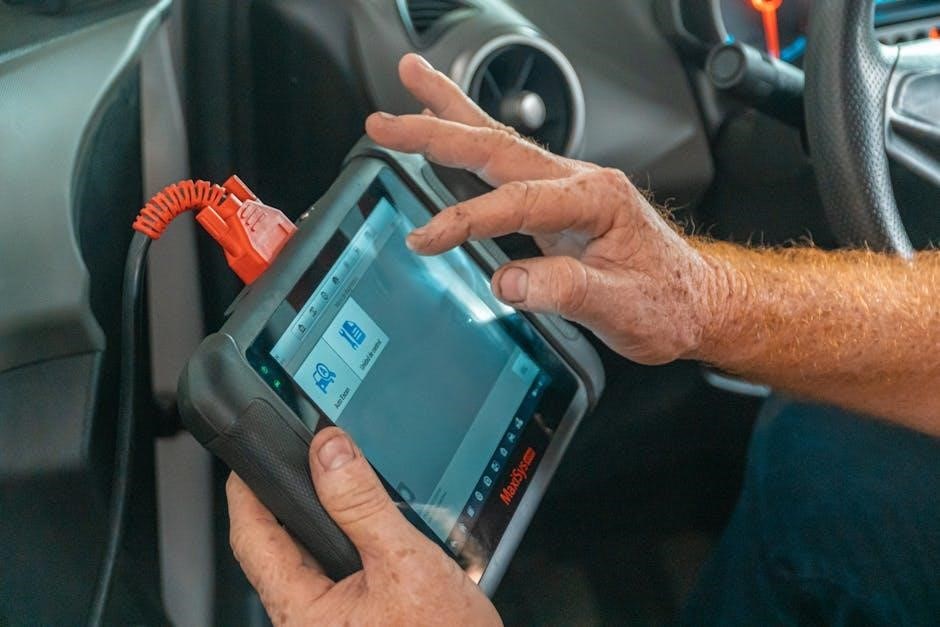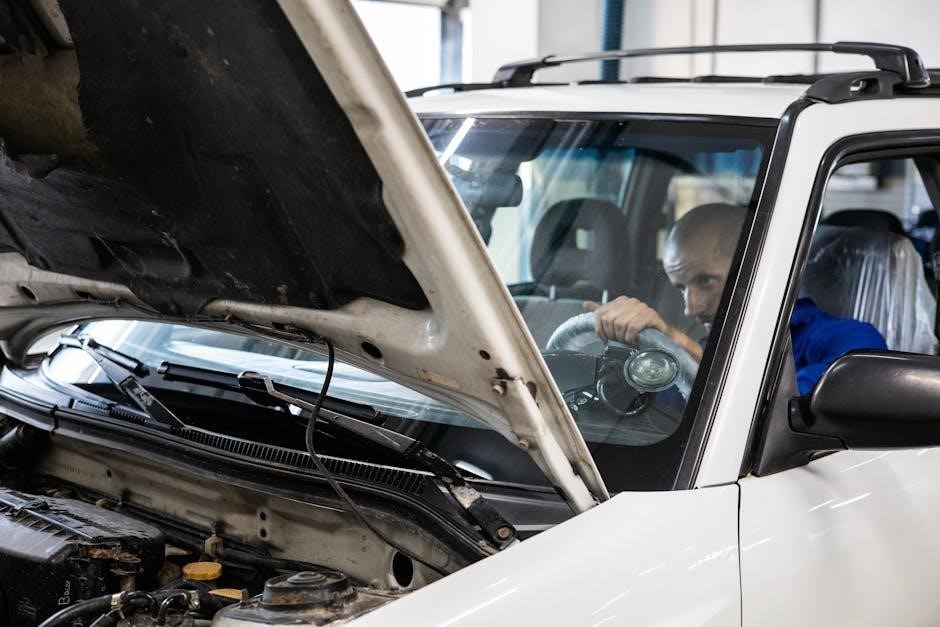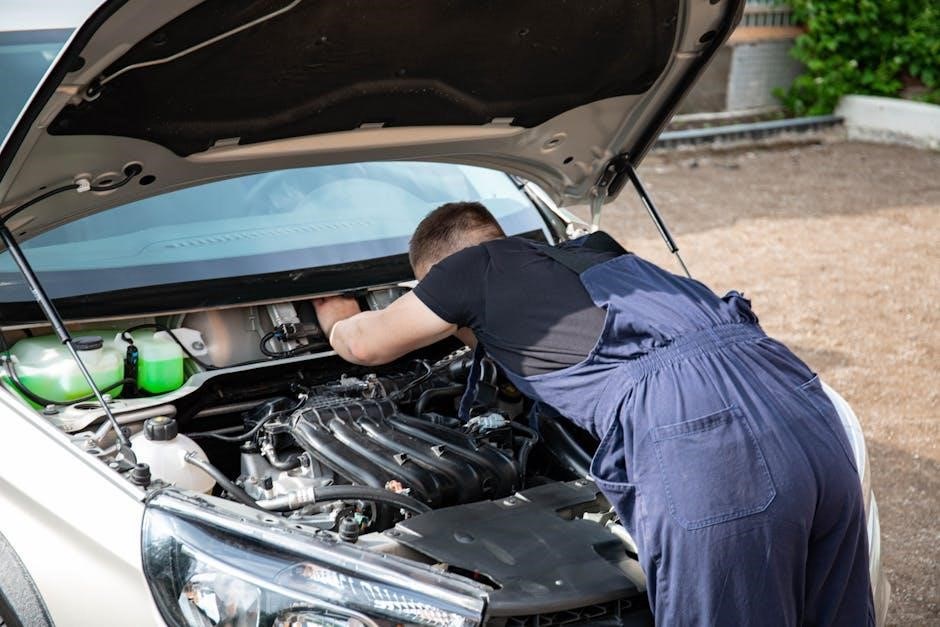The GE washer troubleshooting manual provides guidance on resolving issues with your appliance, including
- step-by-step instructions
and troubleshooting tips to help you identify and fix problems quickly and easily always online․
Importance of Troubleshooting Guides
Troubleshooting guides are essential for resolving issues with your GE washer, as they provide a systematic approach to identifying and fixing problems․ The guides typically include a list of common symptoms, possible causes, and step-by-step instructions for diagnosis and repair․ By using a troubleshooting guide, you can save time and money by avoiding unnecessary repairs and minimizing downtime․ Additionally, troubleshooting guides can help you develop a better understanding of your appliance and its components, allowing you to perform routine maintenance and prevent future issues․ The guides are usually written in a clear and concise manner, making it easy for users to follow along and troubleshoot their washer․ Overall, troubleshooting guides are a valuable resource for anyone who owns a GE washer, and can help ensure that your appliance continues to function properly and efficiently․ They are available online or in print, and can be accessed at any time․

Understanding GE Washer Components
Retaining Bracket and Other Essential Parts
The retaining bracket is a crucial component of the GE washer, responsible for holding various parts in place, including the tub and motor․ Other essential parts include the outer drain hose, wool hanger, and brush, which are all vital for proper washing and rinsing cycles․ The user manual provides detailed information on the installation and use of these parts, including the retaining bracket, which is typically located near the tub․ The technical passport and quick user guide also offer valuable insights into the proper maintenance and repair of these essential components․ By familiarizing themselves with these parts and their functions, users can better troubleshoot and resolve issues with their GE washer․ The online manual provides a comprehensive guide to the retaining bracket and other essential parts, including diagrams and illustrations to help users understand their roles and responsibilities in the washing process․ The manual is available in multiple languages, including English, and can be accessed online for convenient reference․

Troubleshooting Poor Wash Complaints
The manual outlines potential causes and solutions for poor wash complaints using
- step-by-step
guidance always․
Potential Causes and Solutions
The GE washer troubleshooting manual identifies potential causes of poor wash complaints, including improper detergent usage, incorrect water temperature, and malfunctioning washer components․
The manual provides solutions for these issues, such as checking detergent dosage, verifying water temperature, and inspecting washer parts for damage or wear․
A list of possible causes and corresponding solutions is provided, allowing users to quickly identify and resolve problems with their washer․
The manual also includes troubleshooting tips and guidelines for maintaining the washer to prevent future issues․
By following the guidance outlined in the manual, users can resolve poor wash complaints and ensure their washer operates efficiently and effectively․
The manual is designed to be user-friendly, with clear instructions and diagrams to help users navigate the troubleshooting process․
Overall, the GE washer troubleshooting manual is a valuable resource for users experiencing poor wash complaints with their washer․
It provides the information and guidance needed to identify and resolve problems, ensuring the washer continues to operate effectively․
The manual is an essential tool for any washer user, helping to prevent and resolve issues quickly and easily․
It is a comprehensive guide that covers a range of potential causes and solutions, making it an invaluable resource for washer maintenance and repair․

GE Washer Disassembly and Repair
Disassembly requires caution, following
- specific steps
and safety guidelines to avoid damage or injury always during the process online․
Washer Disassembly and Wiring Schematic
The washer disassembly process involves removing various components to access the internal parts, and a wiring schematic is essential to understand the electrical connections and circuits․ A
- step-by-step guide
is provided to help with the disassembly, including the removal of the outer panels and access to the internal mechanisms․ The wiring schematic is a detailed diagram that shows the electrical connections and components, such as the motor, pump, and control board․ It is crucial to follow the
- specific instructions
and safety precautions to avoid damage to the components or injury to oneself․ The disassembly process requires patience and attention to detail, and it is recommended to consult the user manual or a professional if unsure about any aspect of the process․ By following the wiring schematic and disassembly guide, one can safely and effectively access and repair the internal components of the washer․ The process may vary depending on the model and type of washer, so it is essential to consult the relevant documentation and guidelines․

GE Washer Troubleshooting Tips and Precautions
Follow safety guidelines and
- precautions
when troubleshooting to avoid injury or damage to the washer always online safely․
Safe Repair Practices and Precautions
When performing repairs on your GE washer, it is essential to follow safe repair practices and precautions to avoid injury or damage to the appliance․ The user manual provides guidance on how to safely disassemble and repair the washer․ It is crucial to wear protective gear, such as steel toe shoes, and to ensure the washer is properly unplugged before starting any repair work․ Additionally, it is recommended to follow the manufacturer’s instructions and guidelines for repair and maintenance; By taking these precautions, you can ensure a safe and successful repair․ It is also important to note that some repairs may require specialized tools or expertise, and it is recommended to seek professional help if you are unsure about any aspect of the repair․ Following these guidelines will help you to avoid any potential hazards and ensure a safe and effective repair of your GE washer․ Always refer to the user manual for specific instructions and guidelines․
